Recently, Ellie Scott and I were invited along for a Georgian wine trip by Sarah Abbott MW. We experienced the famous Georgian hospitality, explored several wineries, and met one of the few traditional qvevri makers. In Ellie’s latest insight, she shares highlights from our trip and how the long 8,000 year unbroken tradition of Georgian winemaking is shaping its future.
Wine infuses the culture in Georgia like nowhere else in the world. Vines grow on every spare patch of earth, wine bars are on every street corner, and the countryside is littered with qvevri. Everyone from taxi drivers to teachers makes their own wine. But to really understand Georgian wine, you need to understand its history.
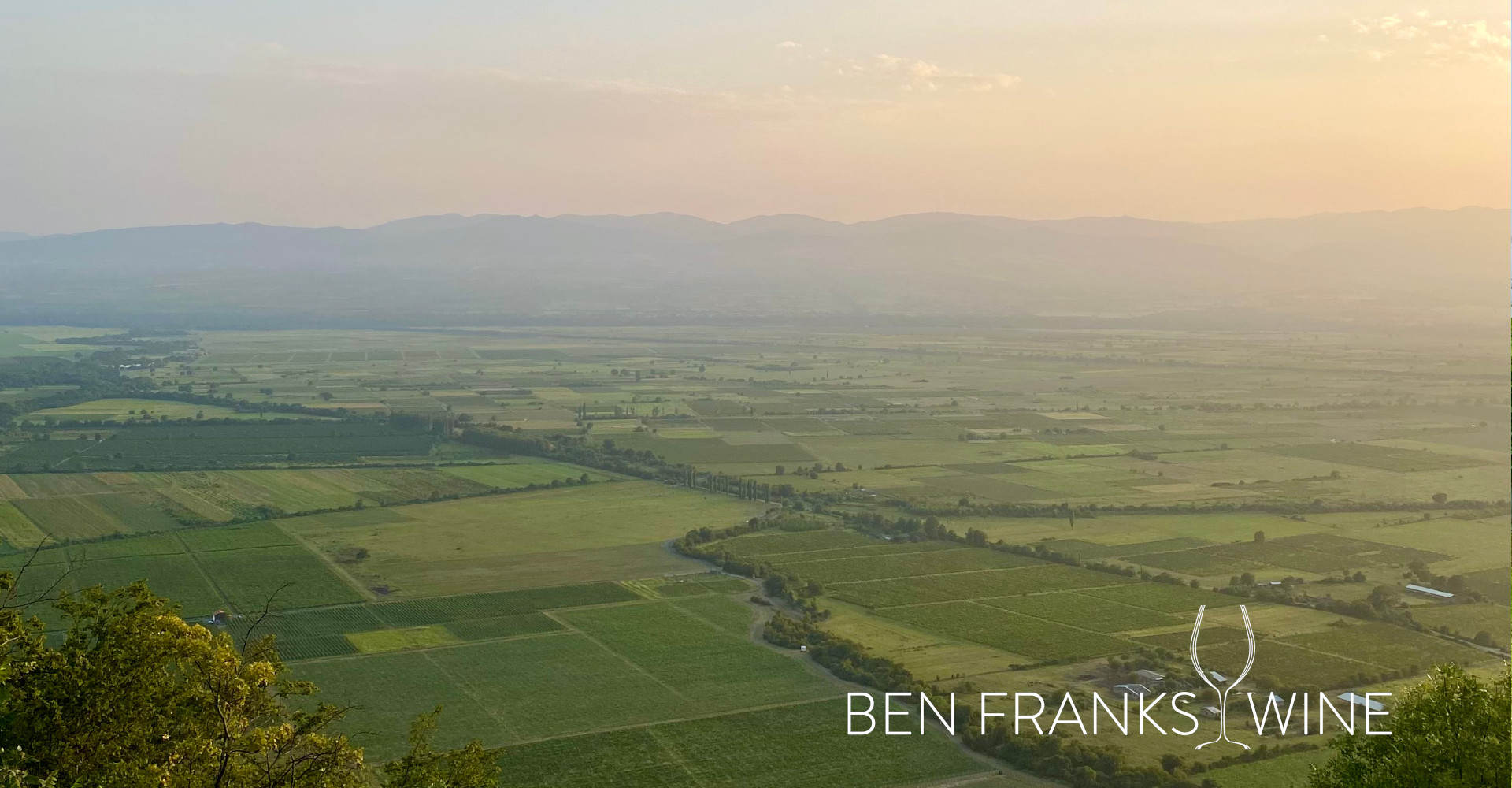
Views of the Alazani Valley, Georgia.
Georgia’s oft-quoted 8,000 years of winemaking is one of the country’s best marketing points. There is evidence that suggests the region was the birthplace of wine, as well as domesticated grapevines, so how is that shaping the wine industry today?
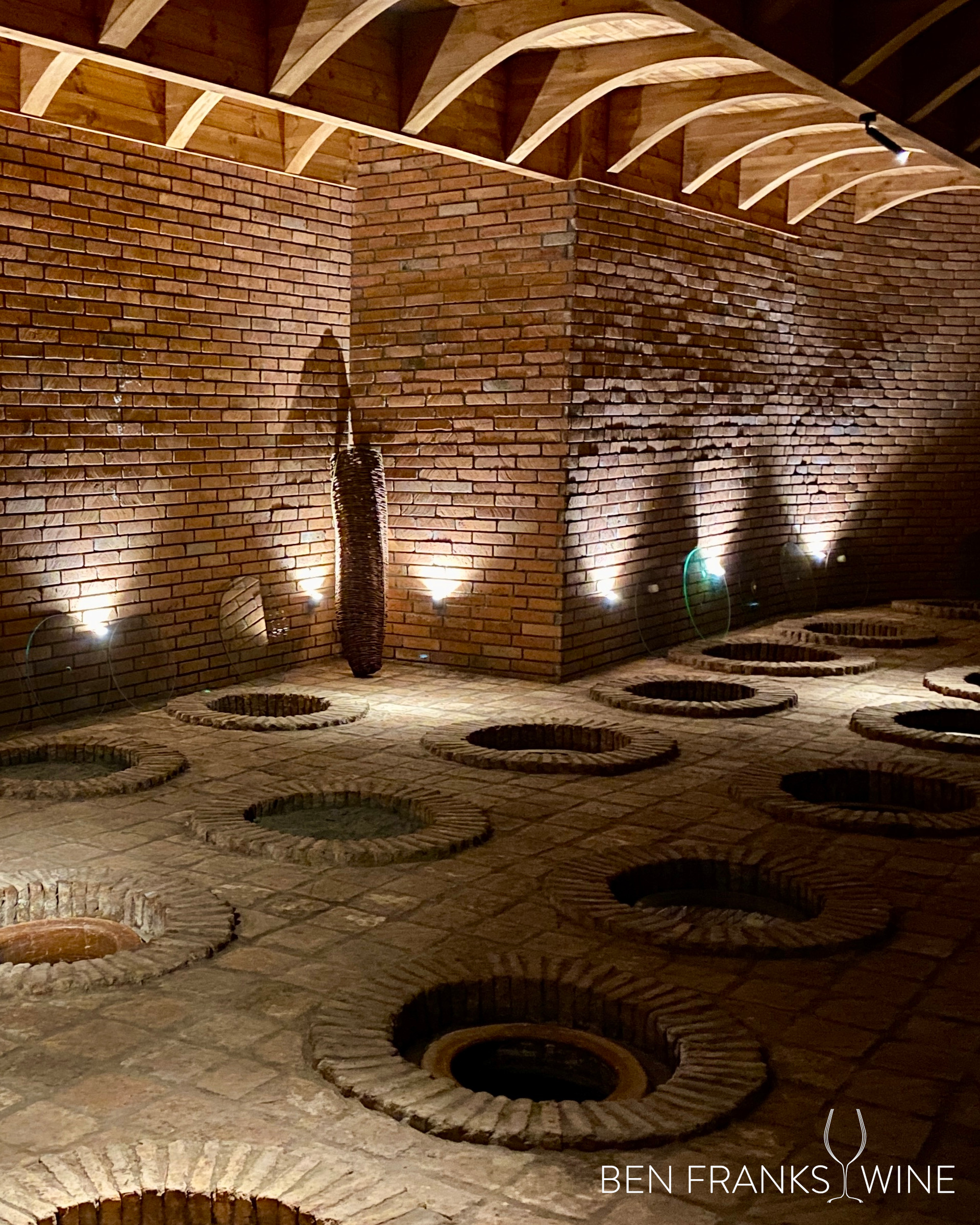
‘Marani’, a qvevri wine cellar, at Chateau Buera.
Qvevri winemaking
Qvevri winemaking is so uniquely Georgian it was registered on the UNESCO list of Intangible Cultural Heritage in 2013. Qvevri (pronounce every letter, kfev-ree) are used for both red and white grapes, with ‘amber’ a beautifully apt name for a white wine with skin contact made in qvevri. The large, pointed, egg-shaped clay vessels are used for fermentation and maturation of wines. Holding anywhere between 800 and 8,000 litres, the pots are completely buried in the ground for natural temperature control. In newer marani (qvevri wine cellars) such as that at Ikano Estate, the qvevri are still buried, but nowadays water pipes are wrapped around the qvevri underground to enable more consistent temperature regulation.

Marani, outdoors at Ikano Estate and temperature controlled by buried water pipes.
Under Soviet control in the 1950s and 60s, wine factories and bulk wine became the norm and with the prohibition of private ownership, qvevri winemaking all but disappeared, surviving only through homemade wines. Qvevri wines now make up around 10-12% of production, with Georgian wines ranging from dry European styles made in stainless steel to oaked, semi-sweet and everything in between. Since the lifting of the Iron Curtain, qvevri winemaking, so synonymous with Georgia, has been finding its place again.
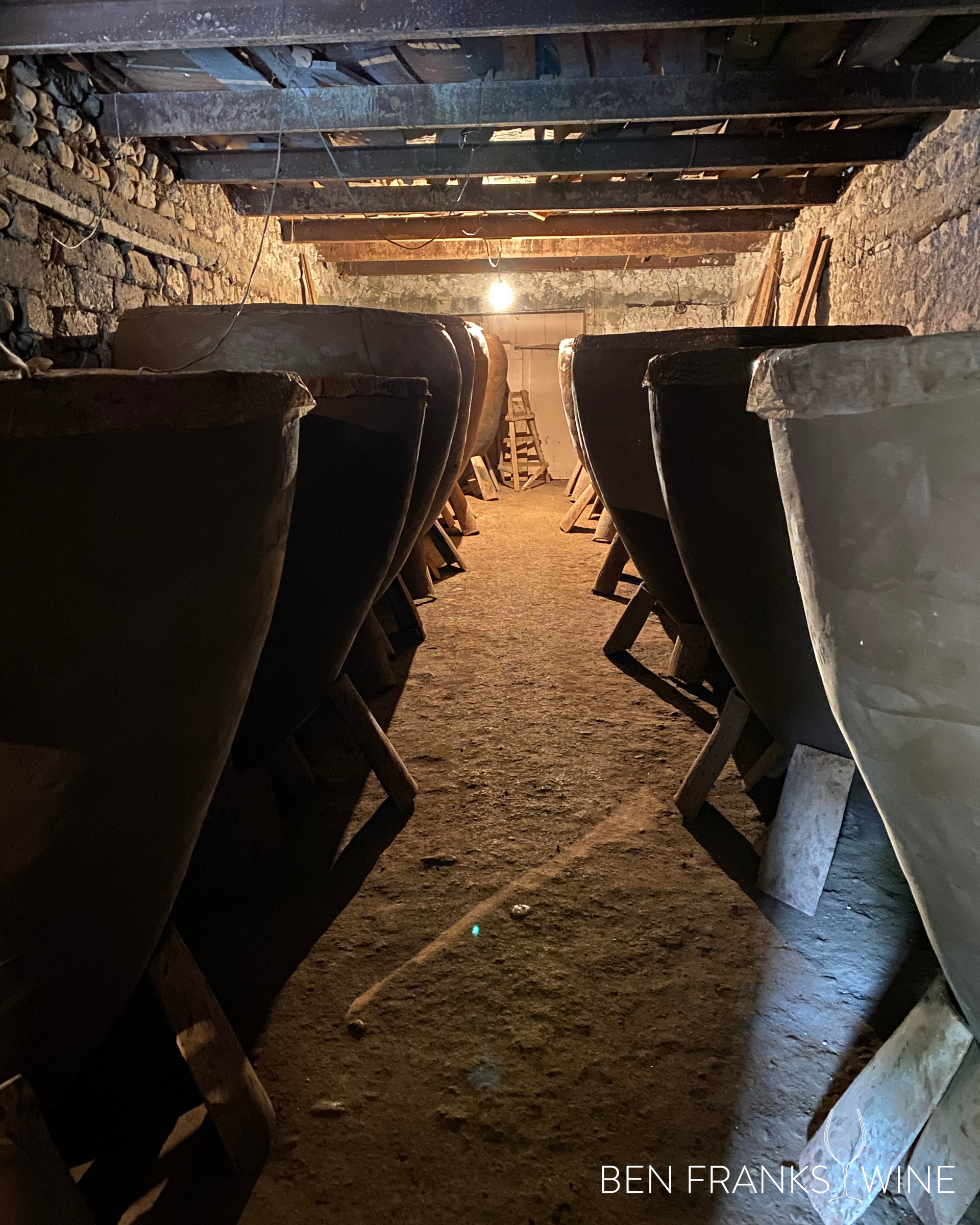
Handmade qvevri at Zaza Kbilashvili’s workshop, Telavi.
When it comes to qvevri, patience is key in all aspects. Zaza Kbilashvili, a quietly spoken qvevri maker in Telavi, estimates that it takes two years on site with him to learn how to make a qvevri. The vessels are painstakingly built up, layer by layer, each few centimetres of clay having to dry before the next are added. The damp and dimly lit, low-ceilinged cellar means the clay does not dry out too quickly, but bad weather can lengthen the drying time. It takes around three months to finish building the qvevri before firing, longer in winter. They are worth the wait, as once in place and treated properly, qvevri should last centuries.
Understanding good winemaking practices, and above all good hygiene, has been key in elevating the status of Georgian wine in other markets. Irakli Cholobargia’s wines poke fun at the previously hit and miss aspect of this style, with his ‘Wet Dog’ wine labels promising they are made ‘in unclean qvevri to get lovely wet dog aromas’.
Such humour should go down well in markets like the UK, lapping up well made low-intervention wines. Diversification of export markets has been a key aim of the National Wine Agency in Georgia since the import ban of Georgian products by its most important market, Russia, in 2006. Imports into the UK have increased significantly over the last five years aided by an organised programme of education and promotion.

Amber wines at Vazisubani Estate.
Indigenous grape varieties
Quality wine cannot be made without quality grapes, and Georgia is justly proud of its estimated 525 indigenous varieties. In the Soviet era of quantity over quality, grape varieties permitted for production were reduced to just 16, and today only around 30 are used commercially. At the National Agricultural Research Centre in Saguramo, plantings of over 1,000 varieties including all 525 indigenous Georgian varieties are being studied. Controlled micro-vinifications are being carried out to assess the potential of sometimes long-forgotten varieties.
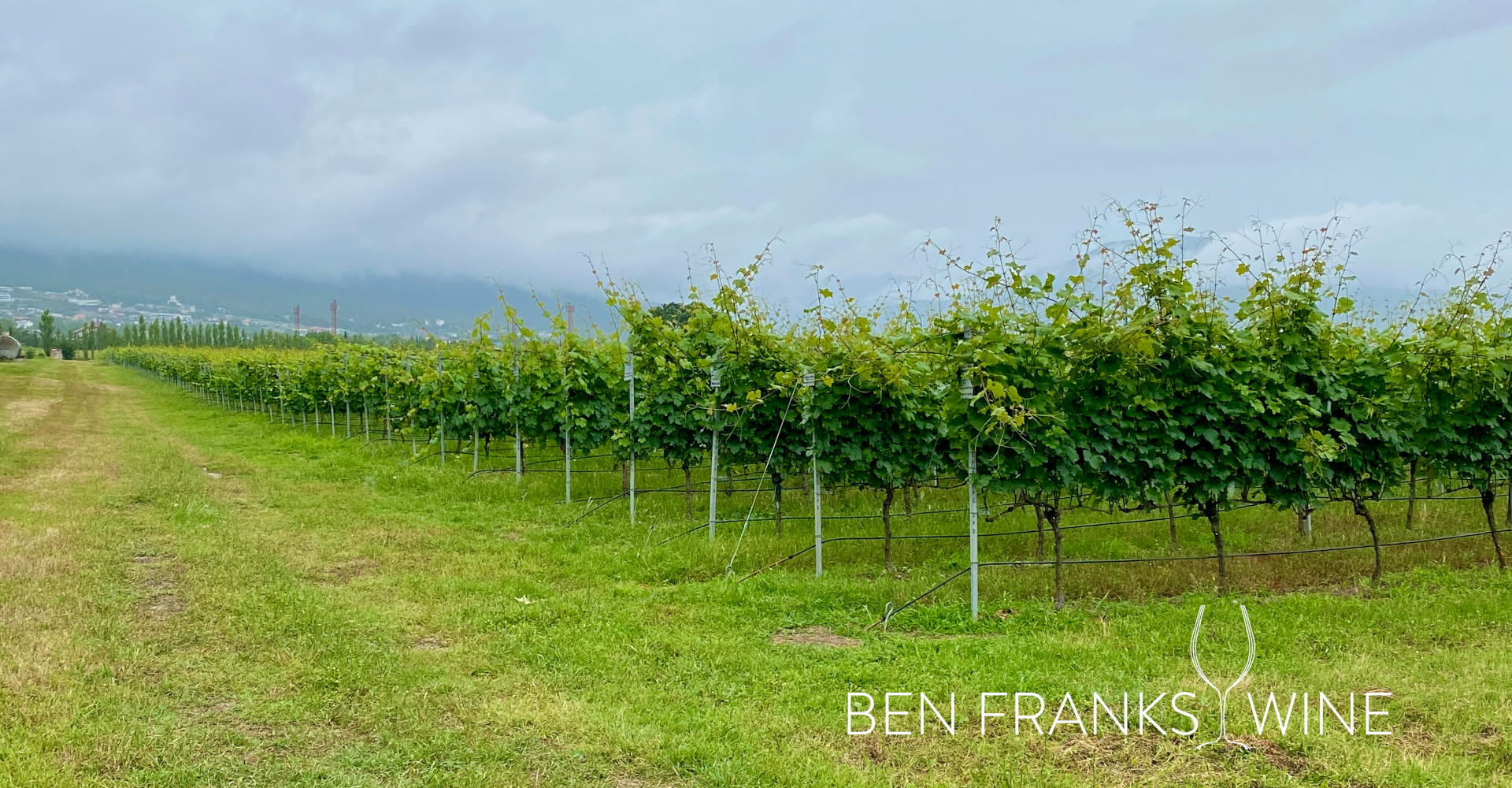
Vines at the National Agricultural Research Centre in Georgia.
Micro producers
This research is also being supported by the huge number of boutique and micro-producers springing up, reviving rare local varieties. Families in Georgia have made wine at home for centuries, and now with more freedom and increased technical knowledge, many of these small-scale winemakers are making their wines available commercially.
Nino Kakutia, whose qvevri are kept in a disused swimming pool in the basement of her house, has only 325 vines, but amongst those are plantings of the rare variety Buza. Nino works with Champagne-born Bastien Warskotte from boutique Kartli producer Ori Marani to make her sparkling wines, including a traditional method Khikhvi.

Nino’s qvevri.
Long-time friend Irakli Peradze of Peradze Wines now produces up to 50,000 bottles a year across 20 wines, including an oaked, lees-aged Chinuri, and a rosé Tavkveri. There is an easy camaraderie amongst small-scale winemakers with a genuine desire to see others succeed, and collaborations like these can only boost the quality of the wines.

Food and wine
It is impossible to talk about Georgian wine without also mentioning Georgian food. The two go hand in hand to form the backbone of Georgian culture. Supras are hours-long sharing feasts, where dishes appear in a seemingly never-ending stream, piled on top of other dishes when there is no more room on the table. Fresh herbs, pomegranate seeds, walnut sauce, pkhali dips of all kinds served with mchadi corn breads, pickles and cheeses galore complement the hot dishes: garlicky chicken chkmeruli, kharcho beef soup, lobio stewed beans. And of course, khachapuri, the ubiquitous cheese-filled bread, made in various guises depending on region.


Khachapuri and Georgian cheese.
These sharing style meals go perfectly with amber and qvevri wines, where the tannins from skin contact stand up well to the diverse flavours. Although European style one-dish-for-one-wine pairings are not traditional, modern Georgian chefs are starting to showcase wines in this way. At a seven-course paired menu at Shilda Winery, celebrity chef Tekuna Gachechiladze tantalised our taste buds with twists on traditional ingredients.
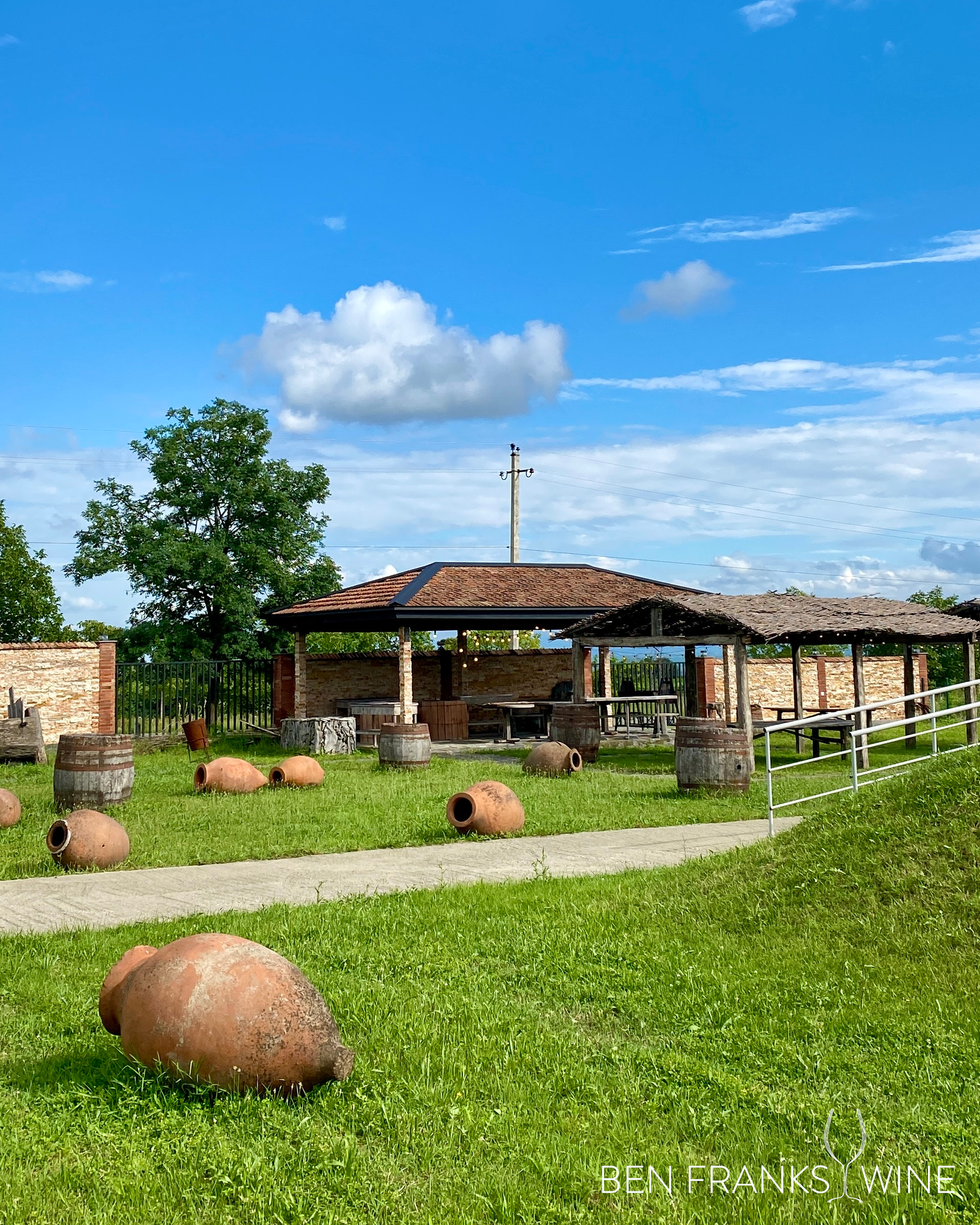
Shilda winery.
Seabass with green plum and tarragon sauce was paired with an amber blend of Rkatsiteli, Kisi and Mtsvane, while a mixed forest mushrooms and artichoke dish matched perfectly with a berry-laden Saperavi.
To really understand Georgian wine, you need to understand its history. But to concentrate solely on its traditions would be to tell only part of the story. With the modernisation of qvevri winemaking, rediscovered grape varieties, food pairings, and micro producers, the most exciting thing about Georgian wine is how the country’s history is moulding its future.
~
Pictures by Ellie Scott.
Have you tried Georgian wine? Let us know your thoughts in the comments below.

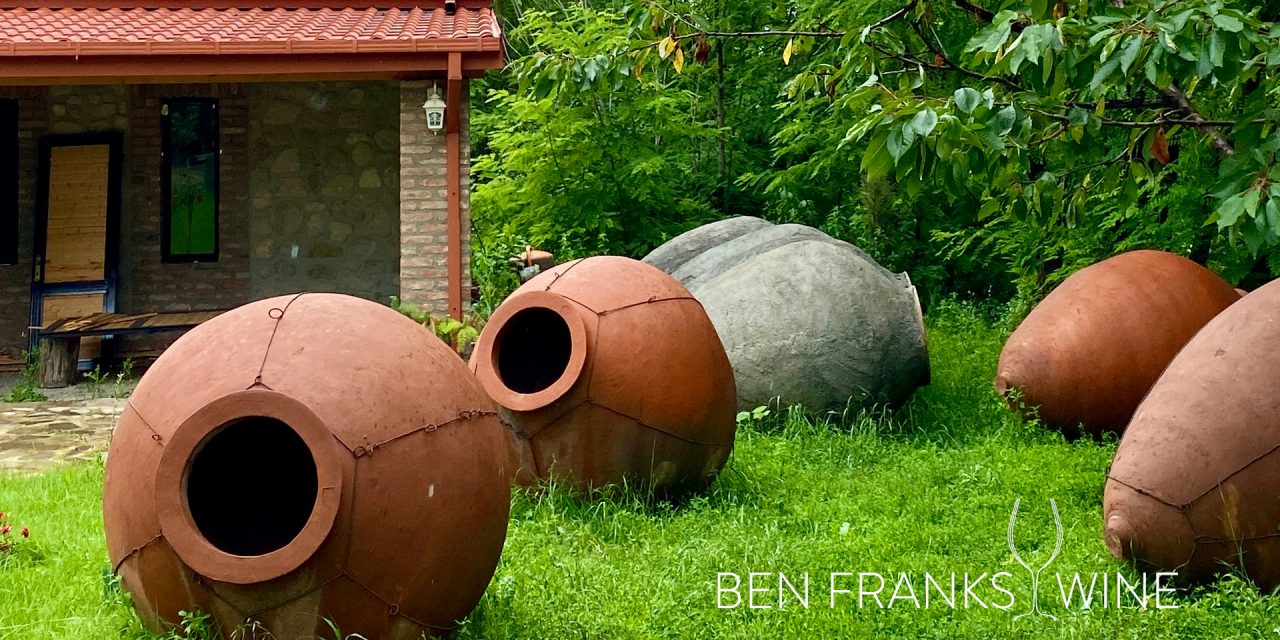





A beautiful evocation of Georgian wine, its history and modern appreciation.
Thank you, Brenda. Ellie is a fabulous writer so that’s some lovely feedback.
Reading this might just get me back on a plane to revisit. I do remember trying a blend of hundreds of indigenous varieties (I guess because they could!)